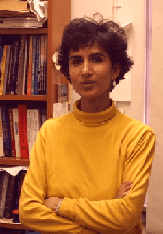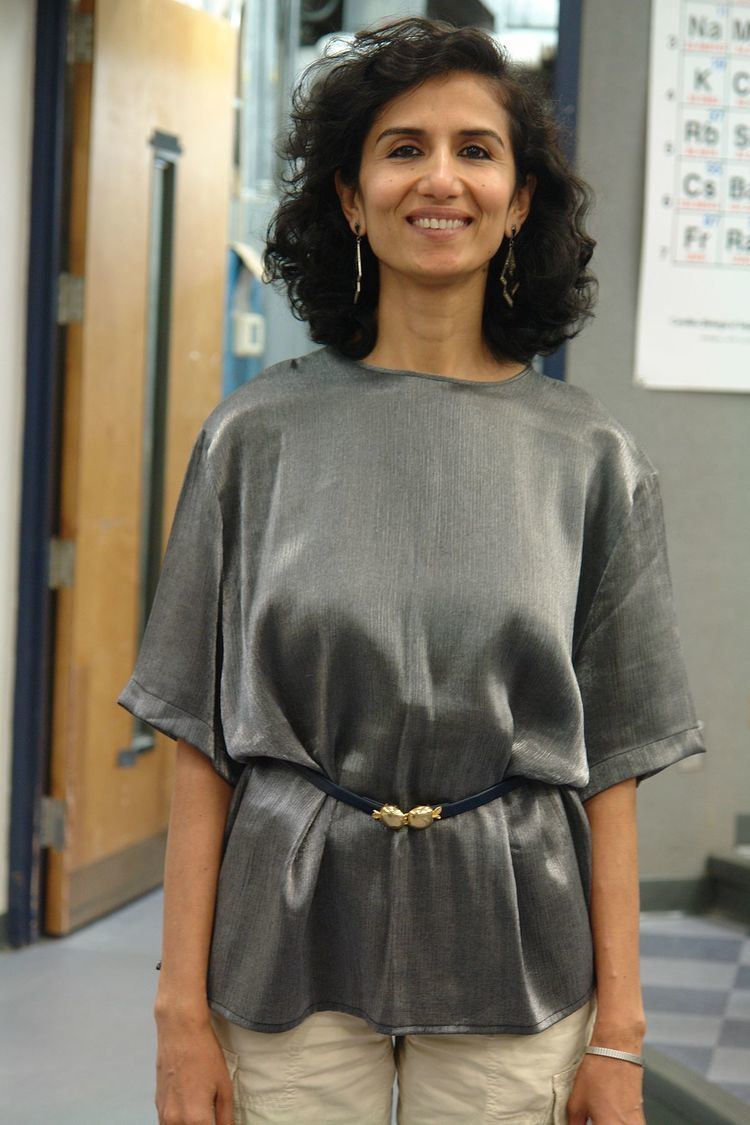Children Akash LevyIshan Levy | Name Chandralekha Singh | |
 | ||
Alma mater University of California Santa Barbara (MA, Ph.D)Indian Institute of Technology (IIT), Kharagpur, India (BS, MS) Spouse Jeremy Levy (1990–present) | ||
Physics with chandralekha singh
Chandralekha Singh is an Indian-American physicist who is a professor in the Department of Physics and Astronomy at the University of Pittsburgh and the Founding Director of the Discipline-Based Science Education Research Center.
Contents
- Physics with chandralekha singh
- Science2016 chandralekha singh improving student understanding of quantum mechanics
- Education Research and Other Professional Activities
- Areas of research
- Other professional activities
- Personal life
- Selected awards
- References

Science2016 chandralekha singh improving student understanding of quantum mechanics
Education, Research, and Other Professional Activities
Singh obtained her BS and MS degrees (5 year integrated MSc.) in physics from the Indian Institute of Technology (IIT), Kharagpur, India, in 1986 and 1988, respectively. She was at the top of her physics class at both the bachelor and masters level at IIT Kharagpur. She obtained her Ph.D. in Physics from the University of California Santa Barbara in 1993 conducting research in condensed matter theory. After her Ph.D., she was a postdoctoral Fellow at the University of Illinois Urbana-Champaign before moving to the University of Pittsburgh in 1995.
After moving to the University of Pittsburgh, Singh gradually transitioned to research in physics education. She has pioneered research-based efforts to improve teaching and learning in advanced physics courses and has conducted seminal research in the teaching and learning of junior/senior level quantum mechanics. She has also conducted important research (which includes both theoretical research and empirical research in physics classes) to improve students’ problem solving, reasoning and meta-cognitive skills and make students good problem solvers and independent learners. She has also made major contributions to assessment of learning in the context of physics and in improving student learning in physics courses at all levels.
Currently, Singh is pursuing physics education research to understand cognitive issues in learning physics, identify sources of student difficulties in learning physics at both the introductory and advanced levels, and design and assess novel curricula/pedagogies that may significantly reduce these difficulties.
Areas of research
In the past, Singh has conducted the following types of research in theoretical physics:
Singh’s Master’s project at IIT Kharagpur, India, involved preparing co-precipitated samples of superconducting YBCO and characterizing them using resistance measurements and scanning electron microscope measurements.
Other professional activities
Upon request from another alumnus from IIT, Singh recorded 130 half-hour lectures for the Topper Learning Channel. The physics lectures for 11th grade and 12th grade physics in India that she recorded focus on the Indian Central Board of Secondary Education (CBSE) curriculum, which is equivalent to college introductory calculus-based physics curriculum in the US. These lectures provide an extremely low cost alternative to expensive tutoring that many Indian parents cannot afford.
These video lectures incorporate research in physics education and help students with the difficulties they commonly have in learning various topics in physics and they also include research-based learning tools to engage students in the learning process. The videos start with a teaser which includes a real world application of physics. The teasers in the video lectures involve a concrete application of physics relevant for the topic of the lecture (e.g., in one teaser, Singh would be biking fast and the bike would be stable but when she would slow down, the bike would wobble and she would ask students why the bike was less stable when she slowed down and then invite them to join her in the interactive video lecture which would help them learn about it). The rest of the video lecture takes advantage of physics demonstrations and visualization tools to help students learn. All videos end with the line “And remember, it’s your universe…know the rules!”
Singh held the chair-line of the American Physical Society Forum on Education from 2009-2013 and was the Chair of the Editorial board of Physical Review Special Topics Physics Education Research (PR-STPER) from 2010-2013. She chaired the second conference on graduate education in physics in 2013 and was the co-organizer of the first conference on graduate education in physics in 2008. She has co-organized two physics education research conferences in 2006 and 2007 and was the co-chair of the 2010 Gordon Conference on Physics Research and Education. She co-chaired the first conference which brought together physicists, chemists and engineers from various engineering departments to discuss the future of materials science and engineering education in 2008. She is passionate about increasing the participation of women and other underrepresented groups in physics at all levels and has conducted several workshops on related issues.
Personal life
Chandralekha Singh is married to Jeremy Levy who is also a physicist and a Distinguished Professor in the Department of Physics and Astronomy at the University of Pittsburgh. They were classmates in the Ph.D. program at the University of California Santa Barbara. They have two sons, Akash Levy and Ishan Levy.
